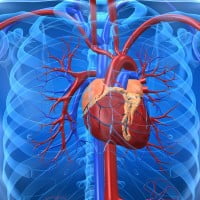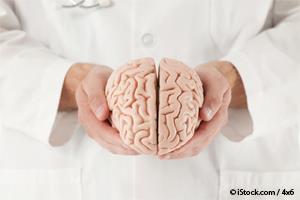Common Painkiller Clouds Judgment

Physical pain and the distress that comes with social rejection have been traced to the same area of the brain. This intriguing connection may shed some light on how acetaminophen (brand name Tylenol) may also affect the brain.
Accumulating research suggests that, along with inhibiting physical pain, acetaminophen may also act on emotions and have other neurological effects.
One of the latest studies, conducted by researchers from the University of Toronto and the University of British Columbia, suggests the popular painkiller may even inhibit the brain response associated with making errors.
Acetaminophen May Make It Harder to Recognize Errors
Sixty study participants were asked to complete a fast-moving target-detection task while hooked up to an electroencephalogram (EEG), which measures electrical activity in the brain.
When the letter F flashed on a screen, they were asked to press a Go button. When the letter E flashed on the screen, they were told to refrain from hitting the button.
Half of the participants took 1,000 milligrams (mg) of acetaminophen (a typical maximum dose) prior to completing the task, and notable changes were displayed on the EEG.
The researchers analyzed brain waves called Error Related Negativity (ERN) and Error Related Positivity (Pe). Both ERN and Pe increased when the participants made errors, but Pe was smaller among those who took acetaminophen.
This suggests the drug inhibits the brain’s ability to detect the error or, more specifically, may reduce the distress associated with errors so you’re less likely to pay attention to them. Lead author Dan Randles, a postdoctoral fellow in the Psychology department at University of Toronto, said in an interview with Forbes:1
“Very recent work in the last few years has suggested that acetaminophen not only affects physical pain, but also feelings of social rejection, uncertainty and evaluative processing.
… This study is the first to provide compelling evidence that acetaminophen is affecting all of these symptoms by reducing the distress associated with any kind of cognitive conflict; whether the source is physical, social or more abstract.”
The study also revealed a surprise finding — that those taking acetaminophen also made more errors. The researchers are planning to look further into whether the drug may increase distraction or mind wandering, thereby leading to increased errors.
Tylenol May Dull Feelings of Personal Distress and Social Rejection
Past research has also unveiled subtle cognitive effects associated with acetaminophen. In 2010, for instance, research found that acetaminophen reduces the pain of social rejection.2
Compared to those taking a placebo, those who took acetaminophen daily for three weeks had reduced neural responses to social rejection in brain regions associated with distress caused by social pain and physical pain (dorsal anterior cingulate cortex, anterior insula).
Then, in 2013, a prior study by Randles and his colleagues found acetaminophen led to changes in the way people made moral judgments, which was used as a measure for personal distress.3
In addition to social rejection, acetaminophen may blunt distress associated with more abstract concepts. The researchers told Live Science:4
“When people feel overwhelmed with uncertainty in life or distressed by a lack of purpose, what they’re feeling may actually be painful distress …
We think that Tylenol is blocking existential unease in the same way it prevents pain, because a similar neurological process is responsible for both types of distress.”
Acetaminophen Might Dull Your Happiness, Too
Acetaminophen’s apparent dulling effect on your emotional responses might work for better or for worse, watering down not only negative emotions but also positive ones. Researchers showed emotional photos to college students who had either taken a 1,000-mg dose of acetaminophen or a placebo.
Those who took the painkiller had more muted emotional responses to both negative and positive images.5 According to the researchers:
“Participants who took acetaminophen evaluated unpleasant stimuli less negatively and pleasant stimuli less positively, compared with participants who took a placebo.
Participants in the acetaminophen condition also rated both negative and positive stimuli as less emotionally arousing than did participants in the placebo condition …
These findings suggest that acetaminophen has a general blunting effect on individuals’ evaluative and emotional processing, irrespective of negative or positive valence.”
As for why the drug might dull your emotions, the researchers suggested it might alter brain activity, such as the activity of serotonin, reduce inflammatory signaling or decrease activation in brain areas linked to emotional processing.6
Although they weren’t tested, the researchers believe other pain relievers, including aspirin or ibuprofen, might have similar emotion-blunting effects.
Acetaminophen Poses a Risk to Your Liver Health
Acetaminophen’s brain effects are only beginning to be understood, but this medication’s risks to other areas of your body are well known.
Acetaminophen overdose is the leading cause for calls to Poison Control Centers across the U.S. — more than 100,000 instances per year — and acetaminophen poisoning is responsible for nearly half of all acute liver failure cases in the U.S.7
Acetaminophen overdoses are also responsible for more than 150 deaths each year in the U.S.8 A major problem is that while acetaminophen is considered safe when taken as recommended, the margin between a safe dose and a potentially lethal one is very small.
Taking just 25 percent more than the daily recommended dose — the equivalent of just two extra strength pills per day — can cause liver damage after just a couple of weeks of daily use.9
Previous research has also shown that taking just a little more than the recommended dose over the course of several days or weeks (referred to as “staggered overdosing”) can be more risky than taking one large overdose.10
This happens more often than you might think. Your risk of severe liver injury and/or death related to acetaminophen increases if you:
- Take more than one regular strength (325 mg) acetaminophen when combined with a narcotic analgesic like codeine or hydrocodone
- Take more than the prescribed dose of an acetaminophen-containing product in a 24-hour period
- Take more than one acetaminophen-containing product at the same time. Make sure to read the list of ingredients on any other over-the-counter (OTC) or prescription drug you take in combination.
Acetaminophen Should Not Be Taken With Alcohol
You should not drink alcohol while taking an acetaminophen product. Research suggests this drug significantly increases your risk of kidney dysfunction if taken with alcohol — even if the amount of alcohol is small.11
Combining alcohol with acetaminophen was found to raise the risk of kidney damage by 123 percent compared to taking either of them individually. Besides alcoholics, young adults are particularly at risk as they’re more likely to consume both.12
This means you should avoid using acetaminophen to treat a hangover as well, a common yet potentially dangerous practice.
Serious Skin Reactions Linked to Acetaminophen
Unbeknownst to many, acetaminophen may also cause three serious skin reactions, two of which typically require hospitalization and can be fatal. What is particularly alarming is that it can occur at any time, even if you’ve taken the medication in the past without issue. The skin reactions linked to acetaminophen include:
- Stevens-Johnson Syndrome (SJS): This reaction begins with flu-like symptoms that progress into a painful purple or red rash that blisters and causes the top layer of your skin to slough off. This can lead to serious infections, blindness, damage to internal organs, permanent skin damage and even death.
- Toxic Epidermal Necrolysis (TENS): TENS also typically begins with flu-like symptoms (cough, headache, aches, and fever) and progresses into a blistering rash. Layers of the skin may peel away in sheets, and hair and nails may fall out. TENS is often fatal, typically as a result of infection.
- Acute Generalized Exanthematous Pustulosis (AGEP): This skin eruption causes numerous pustules to appear on the skin, often accompanied by fever. This condition typically resolves within two weeks once the acetaminophen is stopped.
NAC Is an Antidote to Acetaminophen Overdose
N-acetyl cysteine (NAC) is an antidote for acetaminophen toxicity and is well worth knowing about if you ever use acetaminophen or keep it in your house. NAC is administered as part of standard care in cases of acetaminophen overdose.
While I generally do not recommend using acetaminophen-containing drugs for minor aches and pains, they are sometimes necessary to temporarily suppress severe pain, such as post-surgical pain. For those instances, I recommend taking it along with NAC.
It is believed the liver damage acetaminophen causes is largely due to the fact that it can deplete glutathione, an antioxidant compound secreted by your liver in response to toxic exposure. Glutathione also helps protect your cells from free radical damage. If you keep your glutathione levels up, the damage from the acetaminophen may be largely preventable.
NAC is the rate-limiting nutrient for the formation of the intracellular antioxidant glutathione, which is why it’s such an effective antidote. Mortality due to acetaminophen toxicity has been shown to be virtually eliminated when NAC is promptly administered in cases of acetaminophen overdose. So whether you are taking Tylenol in prescription or over-the-counter form, I strongly suggest taking NAC along with it.
And, if you have children and keep acetaminophen in your home, I strongly recommend keeping a bottle of NAC as well in case of accidental overdose. NAC therapy should be initiated within eight hours of an acute overdose for best results. If you suspect an overdose has occurred, seek medical help right away. If this isn’t an option, the World Health Organization (WHO) recommends the following protocol:13
“Oral administration is the preferred route for NAC therapy unless contraindications exist (e.g. aspiration, persistent vomiting). The usual recommended loading dose is 140 mg/kg followed in four hours by a maintenance dose of 70 mg/kg orally given every four hours.
This dosing is commonly recommended to be continued for 72 hours; however more recent clinical experience supports tailoring the duration of therapy to the patient’s clinical condition.”
Does Acetaminophen Even Work to Relieve Pain?
Acetaminophen is one of the most commonly used pain relievers in the world, but research has shown it may only be mildly effective compared to placebo. It’s been suggested that regular doses of up to 4,000 mg a day of the drug might be needed for optimal therapeutic benefits, but this could pose a risk of serious side effects.14
Meanwhile, in 2015 a systematic review of randomized trials found acetaminophen works no better than a placebo.15 The review of 13 studies found “high-quality evidence” that acetaminophen is ineffective for treating low back pain and had only a small effect in patients with osteoarthritis.
That small effect was “not likely to be meaningful for clinicians or patients,” the researchers wrote. In addition, acetaminophen use increased the risk of having an abnormal result on liver function tests by nearly four-fold.16 Considering the risks, both those that are known and the brain effects that are currently being unraveled, and the lack of clear effectiveness, you may be better off seeking alternative forms of pain relief.
Top Natural Acetaminophen Alternatives
Acetaminophen and related products are familiar household items for many, but they are not the only option when you need relief from pain. For instance, the Emotional Freedom Techniques (EFT) works very effectively for relieving pain and can be used for children as well.
The Advanced Muscle Integration Technique (AMIT) helps treat muscle injuries and pain as well, while these simple exercises may work wonders for treating back pain. No matter what your reason for taking Tylenol, type it into the search box above and you’ll likely find a natural alternative. If chronic pain is your problem, the following options provide excellent pain relief without any of the health hazards that acetaminophen and other pain relievers carry.
- Astaxanthin: One of the most effective oil-soluble antioxidants known. It has very potent anti-inflammatory properties and in many cases works far more effectively than many NSAIDs. Higher doses are typically required and one may need 8 mg or more per day to achieve this benefit.
- Ginger: This herb is anti-inflammatory and offers pain relief and stomach-settling properties. Fresh ginger works well steeped in boiling water as a tea or grated into vegetable juice.
- Curcumin: Curcumin is the primary therapeutic compound identified in the spice turmeric. In a study of osteoarthritis patients, those who added 200 mg of curcumin a day to their treatment plan had reduced pain and increased mobility.17 In fact, curcumin has been shown to have potent anti-inflammatory activity, as well as demonstrating the ability in four studies to reduce Tylenol-associated adverse health effects.18
- Boswellia: Also known as boswellin or “Indian frankincense,” this herb contains powerful anti-inflammatory properties, which have been prized for thousands of years. This is one of my personal favorites, as I have seen it work well with many rheumatoid arthritis patients.
- Bromelain: This protein-digesting enzyme, found in pineapples, is a natural anti-inflammatory. It can be taken in supplement form, but eating fresh pineapple may also be helpful.
- Cetyl Myristoleate (CMO): This oil, found in fish and dairy butter, acts as a “joint lubricant” and an anti-inflammatory. I have used this for myself to relieve ganglion cysts and a mild annoying carpal tunnel syndrome that pops up when I type too much on non-ergonomic keyboards. I used a topical preparation for this.
- Evening Primrose, Black Currant and Borage Oils: These contain the fatty acid gamma linolenic acid (GLA), which is useful for treating arthritic pain.
- Cayenne Cream: Also called capsaicin cream, this spice comes from dried hot peppers. It alleviates pain by depleting the body’s supply of substance P, a chemical component of nerve cells that transmits pain signals to your brain.
- Therapeutic modalities such as yoga, acupuncture, meditation, hot and cold packs, and even holding hands can also result in astonishing pain relief without any drugs.








